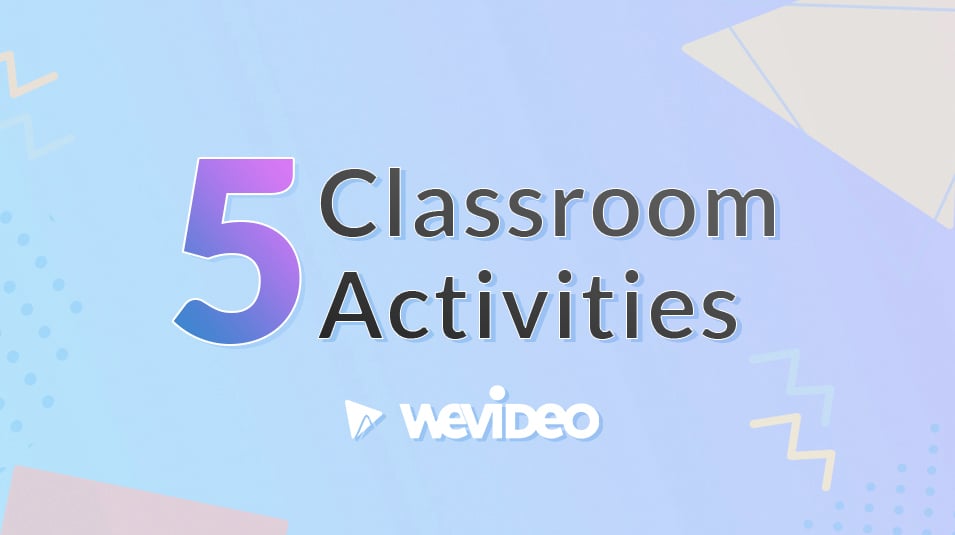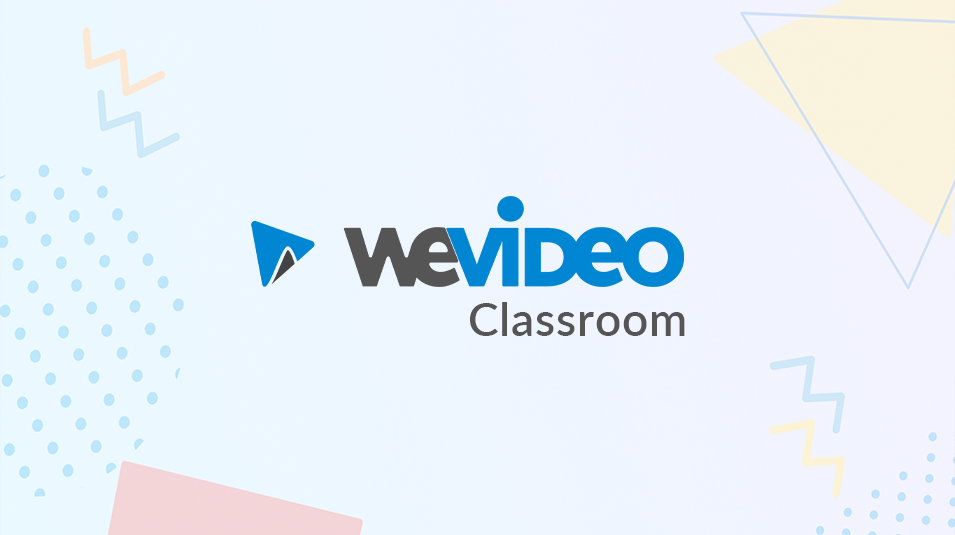
Looking for some fun, enriching, and surprisingly easy multimedia project ideas for your K–12 classroom? WeVideo educator community to the rescue! Through WeVideo (and our newest interactive platform PlayPosit), teachers of all grade levels and subject areas are empowering deeper learning through multimedia creation.
Whether you’re looking for in-class assignments, take-home projects, or flipped learning tasks, get inspired by your peers with these 10 creative teacher resources.
Note: All of the example videos below were made by students or educators in WeVideo. If you haven't tried our collaborative online video editor before, start a free trial!
1. Student reflections through video
Learning and reflection are partners in education! Reflection allows students to take an active role in understanding their own thinking and learning. The process allows them to make sense of previous, current, and future knowledge in addition to developing a strong sense of self — both as learners and human beings.
Reflection videos involve powerful articulation, retrieval, synthesizing, forward planning, and self-awareness. And you need only two things to create student reflection videos: a video/audio recording device and WeVideo. That's it!
As with many of these teaching resources, we recommend an "I Do, We Do, You Do" approach so that students feel supported throughout the process:
- I Do: As the teacher, create an example reflection video using WeVideo's screen recorder.
- We Do: Watch the sample video together, asking students what they noticed about content, pacing, tone, depth of thinking, etc.
- You Do: Have students create their own videos, using WeVideo's real-time collaboration to guide students and provide feedback.
2. Book commercials
Encourage students to think more deeply about a book by asking them to create a video advertisement for it. In the example video above, 3rd graders give a brief synopsis of the book Frindle by Andrew Clements and explain why it's a book worth reading.
For this project, elementary students collaborated to write and divvy up the script — including both English and Spanish narration — and then practiced their presentation skills during the recording.
The educator extended this fun video project even further by bringing it the book life for students! Just like the hero of the book, each student invented a new word, which was added to a professionally bound class dictionary and published in the school library.
3. Video journaling through history
Teaching history? Create a collaborative video journal with submissions from every student in your class. Try this "A Day in the Life of..." project to study other people, places, or things in the past, present, or even the future.
Students love taking a traditional pen-and-paper journaling activity and bringing it to life with stock imagery, special effects, and other quick video edits.
4. Real-life math stories
Not exclusive to educational resources for language arts or social sciences, video-based lesson plans are great for teaching across subject areas — even math!
In this example, the educator had students demonstrate their understanding of a core math concept through video, focusing on how the math standard might be applicable to real-life scenarios like grocery shopping or gift buying.
Learners not only had to think about math in the context of their daily lives; they also had to come up with creative ways to visually express the math concept at work. After publishing their videos, students were asked to solve their peers' math problems and give feedback on their thought process.
That's creativity, voice, higher-order thinking, and communication — all from one easy-to-implement video lesson.
5. STEM project
Give students the opportunity to make an impact in their communities through a research-based, documentary-style video. The steps are simple:
- Divide students into groups and have each group identify a problem and brainstorm a solution.
- Have students write a video outline and identify key people to interview.
- Send them off to record interviews and other footage using their smartphones.
- Have them collaborate in the WeVideo editor to turn their recordings into a documentary that calls viewers to action.
While the example above was made in a 10th grade STEM classroom, these resources and concepts can be adapted to suit any grade or subject. For younger learners, consider shortening the video length, scaffolding with teacher-provided resources, or pre-selecting stock media for students to incorporate.
6. Bilingual vocabulary practice
The purpose of this hands-on video activity was to create a vocabulary station where bilingual students could practice reading and speaking in English and Spanish. Along with the excitement of creating their own videos, the students loved the fact that their peers were making videos, too.
Like most of the teacher resources on this list, you don't need many school supplies to make this one work. The video above was learner-made using a camera, a cell phone, and the WeVideo editor. That's it!
Dr. Karen Jackson, the educator who led this project, recommends it for any bilingual students from grades 4–12.
7. Screencasting with digital whiteboards
Did you know? Multimedia projects can work even for schools and teachers without cameras or other specialized video resources. See WeVideo's built-in screen recorder!
In this example, students recorded their screens (and captured audio) while using a digital whiteboard to work through a math problem. Instead of filling out a basic pen-and-paper worksheet, students were able to show and narrate their thinking step by step — helping the educator better gauge understanding and remediate concepts as needed.
8. Animated whiteboard videos
Here's a similar take on the previous creative teaching resource, only even less tech is needed.
Instead of having students draw on a digital whiteboard, use the physical whiteboard or chalkboard that's already in your classroom. Just set up a camera on a tripod (or have a peer hold it) as the student goes through their narrative with markers and erasers.
Since this production style is already popular for millions of explainer videos on YouTube, your students are likely familiar with it and will enjoy creating their own. It's perfect for an end-of-unit review or an out-of-the-box formative assessment.
9. Fun with green screen
For students of all ages, here's one of the most beloved education resources of all: green screen.
Green screen is like pure movie magic, and with the WeVideo editor, it's as simple as just a few clicks. (In fact, you don't even need a green screen — any solid color background can be "keyed out" with the chroma key feature.)
Students love creating imaginative videos in the vein of award-winning blockbuster films, and teachers love how much students engage with this active learning method. Check out the video above for some creative ideas on making educational content with green screen.
10. Podcasting
Yep — you can create audio-only projects in WeVideo, too! From science to social studies to foreign languages, podcasting helps students share their knowledge in meaningful ways and allows their unique voice to shine through.
Given the serial nature of most podcasts, this medium is also ideal as a year-long project. Have students create episodes at regular intervals and then combine them into a full season at the end of the year.
As students listen back to their own podcasts and their peers', they'll be able to hear the progress they've made. Plus, they'll have a shortcut to end-of-year review, all student-created and student-led!
Want customizable video lesson plan templates?
The 10 free teaching resources above were all created by educators who use WeVideo in their classrooms and who were gracious enough to share their work with us.
But if you're looking for lesson planning resources that are one step more actionable — including not only ideas and inspiration but actual templates — we've got you covered there, too.
Cue…Assignment Ideas!

Available within the WeVideo Classroom space, the Assignment Ideas library gives educators pre-built, ready-to-customize templates for all kinds of multimedia projects. Just open an assignment idea template, customize it to fit your lesson plans, and then assign it to your class directly from WeVideo.
With Assignment Ideas, you've got an engaging, ISTE standards-aligned curriculum already planned for you. Give your students voice, choice, and agency with less elbow grease from you!


